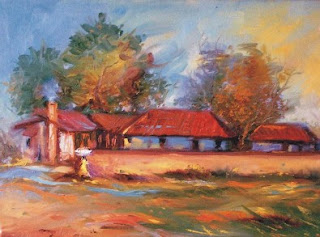Mona Lisa unlike most people would think is not
actually an imaginary title of a piece of art work. Rather, this painting
(1503-7), executed by the greatest artist and creative mind so far modern
history has known, arguably, – the Italian Renaissance master, Leonardo da
Vinci, and measuring 77cmx53cm, is the portrait of the wife of a local Italian
peasant.
 |
| Mona Lisa |
Today this painting also arguably, is the most
important singular piece of artwork available today, both in terms of value, as
well as popularity, and bearing in mind that it is after all not a very large
scale job per se. The Mona Lisa is the
most famous painting in the history of art and continues to inspire oil
painting reproductions, parody, scientific theory, and more. According
to the Guinness Book of world Records, Mona Lisa was assessed for insurance
purposes at $100 million in 1962, but insurance was not concluded because the
cost of the strictest security precautions was less that of the premium.
Mona Lisa which is housed in the popular (Gallery)
Louvre in Paris , France
By Morgan Nwanguma









.jpg)


